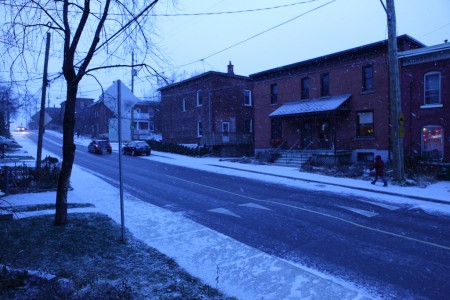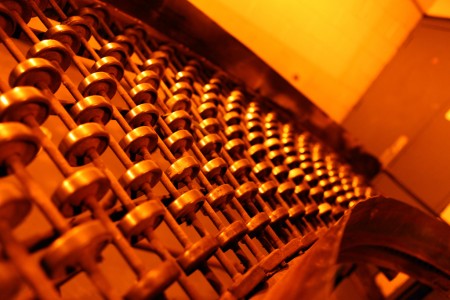One interesting thing about ports is the way in which they accumulate obsolete vessels and buildings. In Montreal, there is a stretch of waterfront in the old port area which has been enhanced for tourists, but which is nonetheless situated alongside old grain elevators and other bits of industrial refuse.
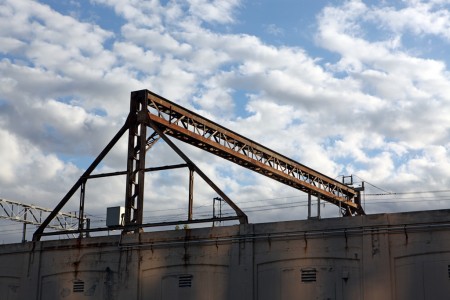
70mm 1/130″ f/8 100ISO
Here, light reflecting off parked cars was illuminating the shadowed side of the motorway.
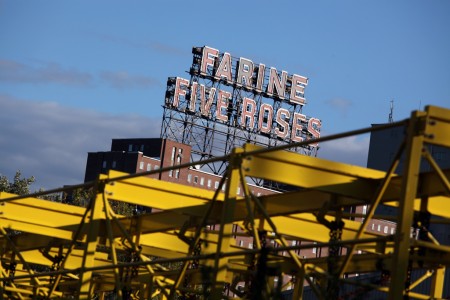
200mm 1/130″ f/8 100ISO
This prominent sign has a dedicated art project online. Since 2006, the ‘Farine Five Roses’ brand has apparently been owned by Smuckers.

200mm 1/250″ f/8 100ISO
The City of Montreal has gone to considerable lengths to exclude urban explorers from these old grain elevators. That’s probably quite sensible, given the hazards that are almost certainly inside. Nonetheless, I did see some urban exploration photos from inside this complex during my weekend in Montreal.
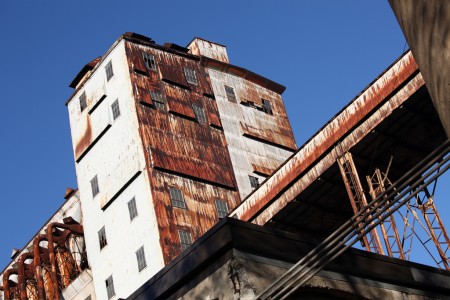
70mm 1/200″ f/8 100ISO
In particular, I would be anxious about using any of these rusted overhanging walkways.
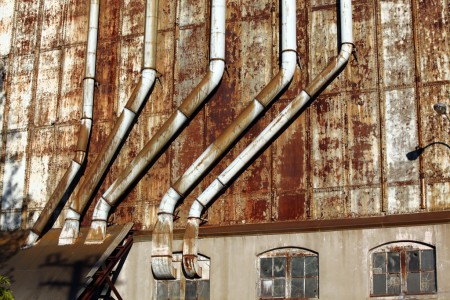
70mm 1/320″ f/8 100ISO
I have always enjoyed the interesting textures that are produced by rusting metal.
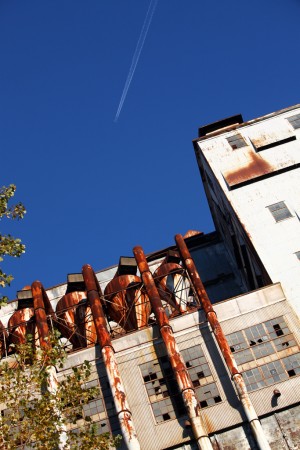
70mm 1/200″ f/8 100ISO
Similarly, the contrast between the increasingly oxidized iron and the blue sky is attractive, when these old towers are viewed on a clear day.
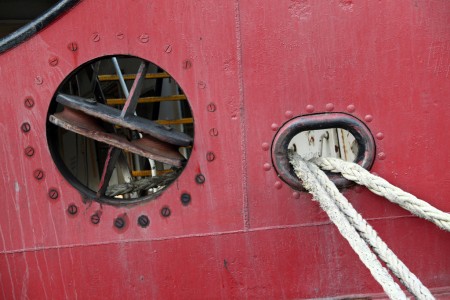
120mm 1/100″ f/8 1600ISO
Between two of the moorings for large passenger vessels, a pair of old steamships are currently tied. Quite possibly, they are destined to be sent off for scrap.
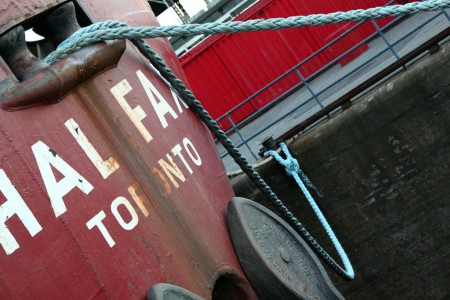
93mm 1/80″ f/8 800ISO
Whenever I see a catenary, I am reminded of the various ‘Connections’ television series’ hosted by James Burke. Like making pigments from coal, the caternary form is a connection that arose again and again on the show.
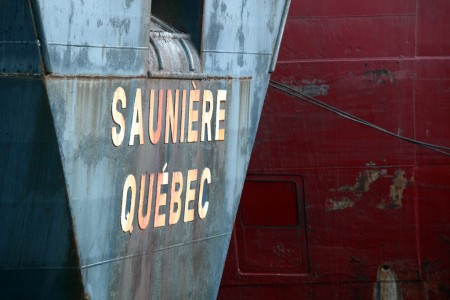
190mm 1/160″ f/8 2500ISO
Most of these photos were taken using Canon’s 70-200mm f/4L lens. Nearly all were shot at f/8, with the ISO setting and shutter speed adjusted to take into consideration the amount of ambient light, the degree to which I could brace the camera, and the relative brightness or darkness of the subject.
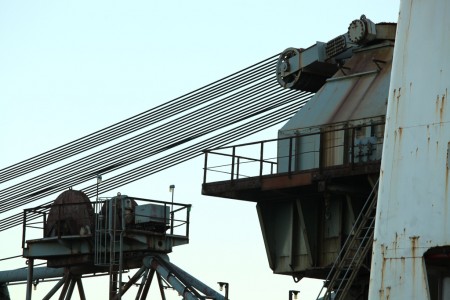
180mm 1/200″ f/8 400ISO
The original purpose of both ships was obscure to me, though they were clearly designed for some industrial use, rather than the transport of passengers.
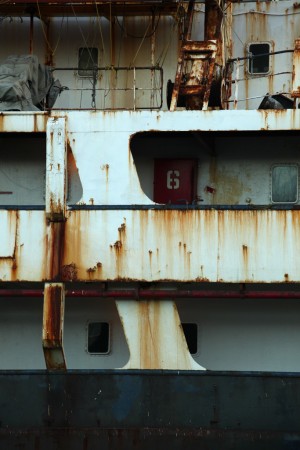
200mm 1/200″ f/8 640ISO
Despite that, some details of the ships provide insight into how their crews would have experienced life aboard them.
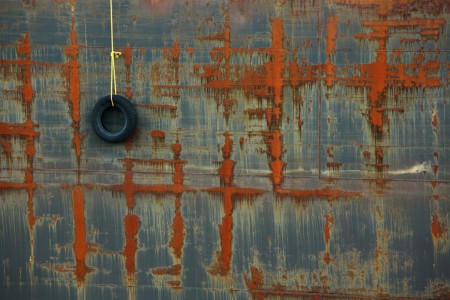
185mm 1/40″ f/8 800ISO
Perhaps something about the redox interactions between the different structural elements of the ship explains this pattern of rusting.
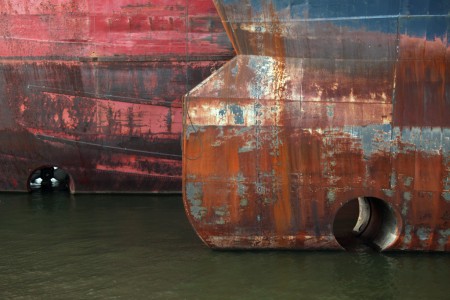
110mm 1/60″ f/8 800ISO
I suspect these are bow thrusters, used to manoeuvre ships in relatively tight quarters.





